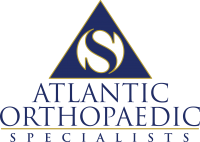Tennis Elbow Injury Surgery
What Is Tennis Elbow Injury Surgery?
Nonsurgical Treatment
Approximately 80% to 95% of patients have success with nonsurgical treatment.
- Rest. The first step toward recovery is to give your arm proper rest. This means that you will have to stop participation in sports or heavy work activities for several weeks.
- Non-steroidal anti-inflammatory medicines. Drugs like aspirin or ibuprofen reduce pain and swelling.
- Wrist stretching exercise with elbow extended.
- Equipment check. If you participate in a racquet sport, your doctor may encourage you to have your equipment checked for proper fit. Stiffer racquets and looser-strung racquets often can reduce the stress on the forearm, which means that the forearm muscles do not have to work as hard. If you use an oversized racquet, changing to a smaller head may help prevent symptoms from recurring.
- Physical therapy. Specific exercises are helpful for strengthening the muscles of the forearm. Your therapist may also perform ultrasound, ice massage, or muscle-stimulating techniques to improve muscle healing.
- Brace. Using a brace centered over the back of your forearm may also help relieve symptoms of tennis elbow. This can reduce symptoms by resting the muscles and tendons.
- Counterforce brace.
- Steroid injections. Steroids, such as cortisone, are very effective anti-inflammatory medicines. Your doctor may decide to inject your damaged muscle with a steroid to relieve your symptoms.
- Extracorporeal shock wave therapy. Shock wave therapy sends sound waves to the elbow. These sound waves create “microtrauma” that promote the body’s natural healing processes. Shock wave therapy is considered experimental by many doctors, but some sources show it can be effective.
Surgical Treatment
If your symptoms do not respond after 6 to 12 months of nonsurgical treatments, your doctor may recommend surgery.
Most surgical procedures for tennis elbow involve removing diseased tendon and reattaching healthy tendon back to bone.
The right surgical approach for you will depend on a range of factors. These include the scope of your injury, your general health, and your personal needs. Talk with your doctor about the options. Discuss the results your doctor has had, and any risks associated with each procedure.
Open surgery. The most common approach to tennis elbow repair is open surgery. This involves making an incision over the elbow.
Open surgery is usually performed as an outpatient surgery. It rarely requires an overnight stay at the hospital.
Arthroscopic surgery. Tennis elbow can also be repaired using tiny instruments and small incisions. Like open surgery, this is a same-day or outpatient procedure.
If your symptoms do not respond after 6 to 12 months of nonsurgical treatments, your doctor may recommend surgery.
Most surgical procedures for tennis elbow involve removing diseased tendon and reattaching healthy tendon back to bone.
The right surgical approach for you will depend on a range of factors. These include:
- the scope of your injury
- your general health
- your personal needs.
Talk with your doctor about the options. Discuss the results your doctor has had, and any risks associated with each procedure.
Our team is here for you
We offer the best, least invasive and least aggressive options to relieve your pain and symptoms so you can get back to the life you love. Atlantic Orthopaedic Specialists Hand, Wrist, Elbow and Shoulder Care Center has convenient locations in Virginia Beach, Norfolk and Chesapeake.




